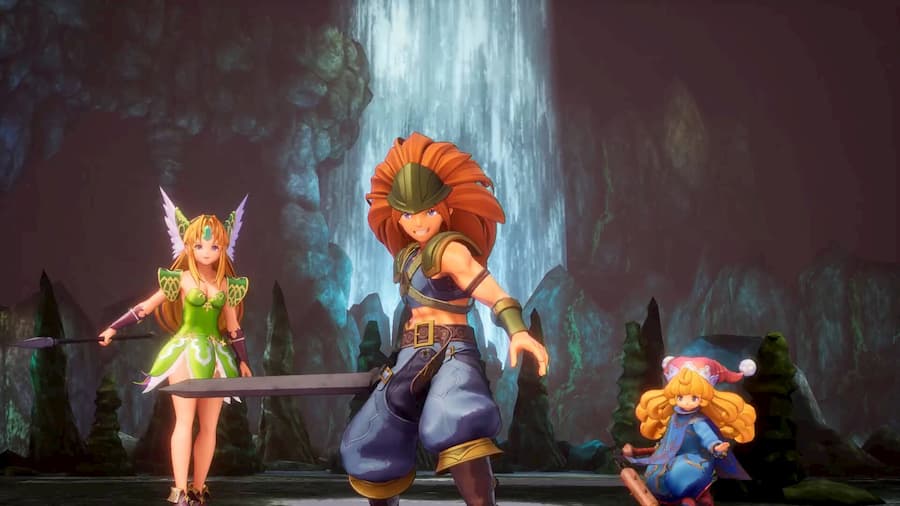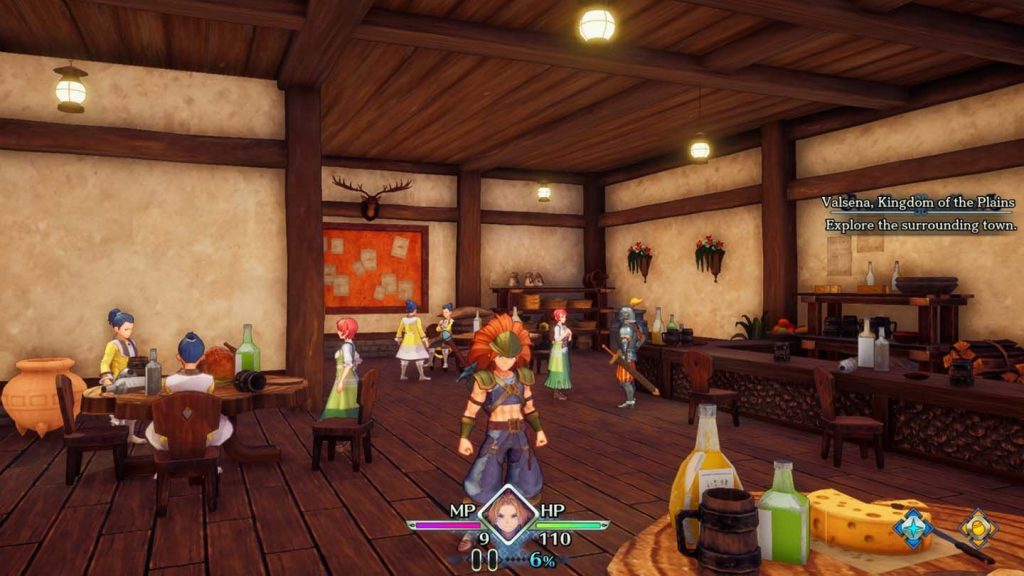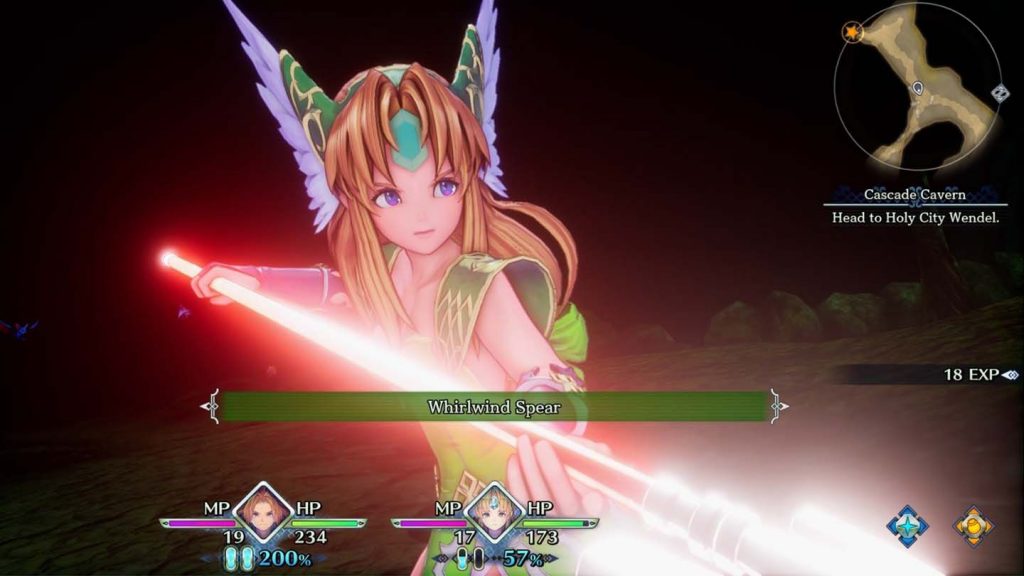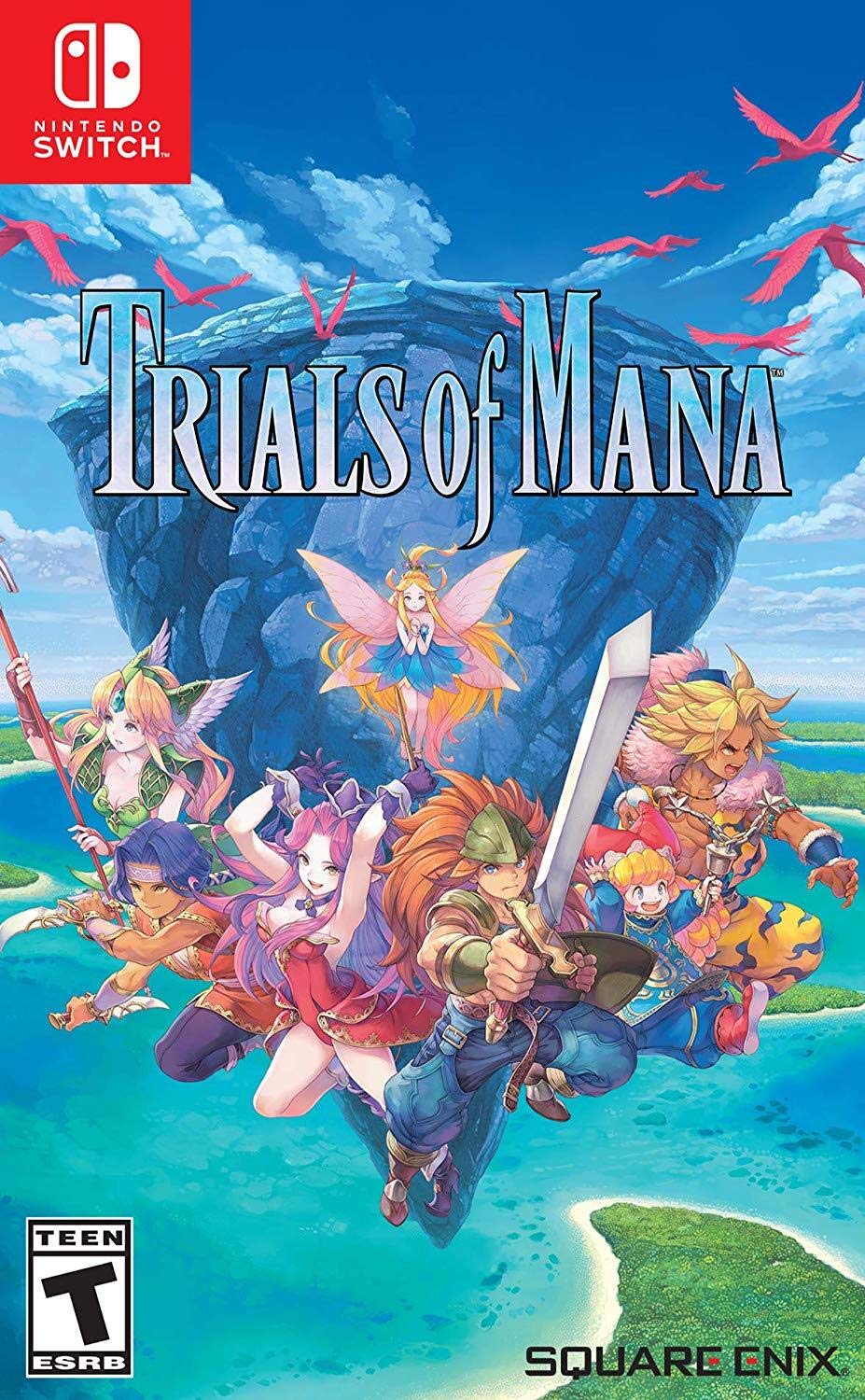Remaking a game is always a sticky business. You have to thread a needle between remaining faithful to what made the original great and updating it to fit modern sensibilities, choosing what archaic charms to keep and what to throw away. Figuring out how to fit an all-time classic into the modern gaming landscape is no easy task, but in April of this year Square Enix lay it all on the table to release one of the highest profile remakes ever released, garnering a mixture of praise and derision that shows the foibles that such games inevitably fall into no matter the intention.
Obviously, however, we’re not here to talk about Final Fantasy VII Remake. We’re here to talk about Square Enix’s other remake of a mid-’90s RPG that came out in April, Trials of Mana. Once one of the Super Famicom games most sorely missed on Western shores (Seiken Densetsu 3), Squeenix surprised the world last June by not just releasing the game with a localization as part of the Collection of Mana three-pack, but revealing a full-on 3D remake due this year. And in the wake of both finally releasing the original in the West and a very disappointing Secret of Mana remake just a couple years back, it begs the question: why remake this game at all, and not simply be content with the original?
The remake’s answer is pretty simple. Because it’d be fun.
Trials of Mana is a game featuring six different characters, of whom you play through the game with three of them. There’s a pretty decent variety of options, from the brawny Duran to the werewolf Kevin to many more, and depending on which main character you pick, you’ll have one of three different slight variations on the game’s plotline and Big Bad. Toss in a huge number of branching class lines for each characters and you have a very strong replay value for such a linear JRPG, making an already nice 20-30 hour experience have the potential to extend much longer. (For the record, my playthrough starred Riesz, Hawkeye, and Angela.)

Plot-wise, this flexibility of character choice informs most of the game’s story structure, as you’ll witness your main character’s origin story before setting off with them and eventually encountering your other characters of choice. Individual character arcs vary in quality from passable to middling, with generally thin plots and simple motivations transplanted from the original. While the fact that the ultimate antagonist (and final dungeon/bosses) changes depending on who you pick as your lead is neat, the broad story is flaky enough to allow for these changes, making it the overall plot somewhat flimsy. While hardly the most egregious writing the world has ever seen, it’s definitely not the game’s strong suit (especially given some odd localization choices like… giving Charlotte UwU speak for every single line).
But that’s expected to be pretty similar, given it’s a remake and all. What about the things that can — and should — be updated? Graphically, the game is bright and vivid, with a distinct art style that’s part cartoony and part anime. Enemy designs retain the charm of their SNES counterparts, and the jump to 3D allows some breathing room and variety in level design that goes much appreciated. Meanwhile, the game remasters Hiroki Kikuta’s classic soundtrack to charming effect, offering a variety of mellow and pleasant tunes to lose yourself in (and if you don’t like the remastered versions, you can switch over to the original). The only knock on the audiovisual end of things is really the English voice acting, but I switched over to the Japanese voice track soon after starting and enjoyed the A-list cast there. (If you’re a dub lover though, be warned that the snippets I heard were… not great.)

Really though, Trials saves most of its overhauls for the gameplay side of things, where they’re sorely needed. Action games have progressed a long, long way in the quarter-century since Seiken Densetsu 3’s original release, and while Trials of Mana doesn’t necessarily push the envelope in the way a Platinum title might, it still brings a very enjoyable and updated experience to the table. Each character has their own, distinct moves but use the same button combinations based on a mixture of weak and strong attacks. Combos are simple to execute but feel satisfying and weighty; and toss in spells, character switching, and special moves, and the game feels not only fast-paced and fluid, but surprisingly dynamic.
This is all compounded further when you take the game’s character building aspects into account. Each level-up gives you points to allocate towards one of five stats, which not only affect your proficiency in said stats but also what skills and moves you’ll learn. If you make a beeline for certain abilities, you may neglect your talents in other areas, for example. And then you get into class changes, where you have a choice in how you develop each character moving forward into the game — and also a choice in what sick duds you want to give them (even if some of the duds are of questionable taste). All of this combines to give you an experience that’s extremely customizable to what sort of playstyle you want to see.

For example, in my playthrough I played as Riesz most of the time, whose lance made her good for distanced, weighty moves, and whose class gave her a debuffing focus. Hawkeye also had debuffing moves but hewed as more of a speedy, multi-hit character whose toolkit allowed for easy poisoning and eventually one-hit kills; while Angela was a standard mage casting big AOE spells. While each felt fundamentally similar to control they each played very differently — and I can imagine tooling them in different ways to tweak their playstyle even more. Given that this was only one set of class combinations for one set of characters, I can only imagine the possible loadouts you can construct!
I mentioned it before, but this is a game that really feels like it has a chunky amount of replay value. Between the aforementioned customizability and the slight variances you get depending on your main character, you can squeeze at least three playthroughs of significantly different experiences out of the game. Mind you that most of the game is the same regardless of who you’re playing as, but just engaging in the different combat styles and loadouts (and snazzy outfits!) is more than encouraging of a replay personally… though I can imagine that this isn’t the sort of game you can play forever.
There are a few nagging issues unmentioned. There’s a bit of backtracking at points, a holdover from the asset-saving of the original (though except for a couple points in the mid-game there isn’t anything particularly bad). The game’s pacing is usually good but can sometimes go a little combat-heavy without enough story to break things up, mostly in the later sections (conversely, the start of the game has the opposite issue). The original had multiplayer while this one is squarely a single-player experience, which is a bit of a shame considering how rare multiplayer RPGs are these days.

However, the strengths exceed the detriments. There’s a bit of postgame content added that’s new to the remake, giving your characters new classes(!) and also a new dungeon and boss to work through. Variances in conversation allow your characters to mingle a little more than they did in the original (because Riesz and Hawkeye share a common enemy, for example, they had the occasional scene of dialogue that was a little more involved). But more than any of that, Trials of Mana was just… fun! I was honestly surprised by just how engaged I was with the core gameplay loop, and how the game struck a nice balance of difficulty that kept me on my toes but never particularly stressed. In fact, I found this game pretty well-suited for stress relief, what with the giant super attacks and the gratification of button mashing. Not a bad thing in this quarantine.
But more than that — whether it was simplicity, or cleanliness, or maybe just good old-fashioned nostalgia — there was something immensely charming about the entire experience. I’ve been on a bit of a gaming lull recently, but I found myself captivated by Trials of Mana in a way I haven’t been for a while. Was it the residual effect of its old SNES charms? Something particular in the way it constructed its gameplay? Or simply the right game for me at the right time? I can’t say for certain, but only in the process of writing this review am I realizing just how much I really enjoyed it.
Trials of Mana is certainly a different breed of remake from its fellow Square Enix April bombshell, the previously mentioned FFVIIR. It had no bombastic budget or AAA graphics. Much of the original’s story, game design, and writing has been faithfully maintained, for better or for worse. The facelift and mechanical reinventions don’t so much carve a bold new path in video gaming as update the original to be palatable to today’s audience. But in the end, maybe that’s all that’s needed.
Leave a Comment

System: Nintendo Switch
Release Date: April 24, 2020
Categories: Role-Playing, Action
Publisher: Square Enix
Developer: Square Enix


